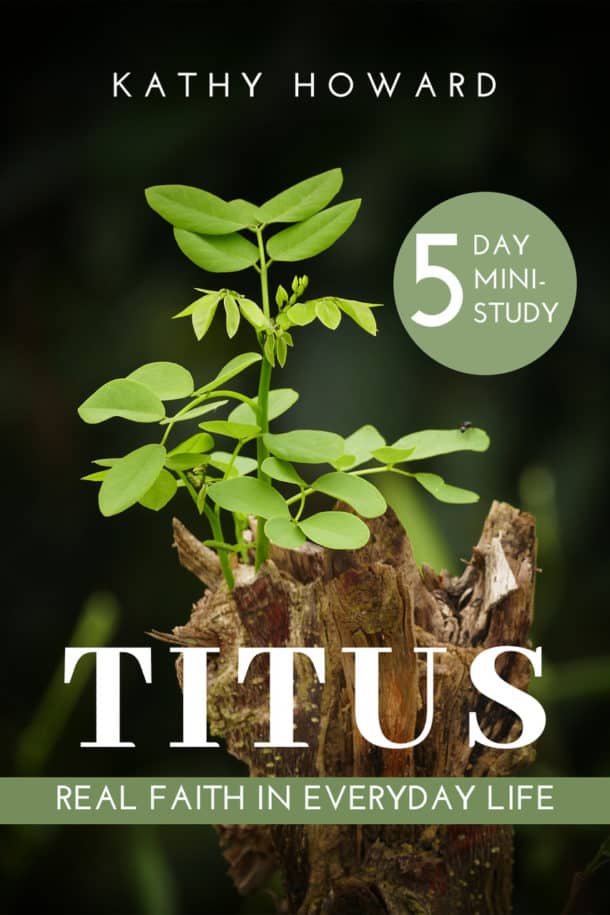
When I first began to read and study the Bible regularly, about 35 years ago, I did not know about proper study techniques. Since I lacked confidence in doing Bible study on my own, for years I depended on the wonderful resources of reliable Bible teachers like Beth Moore, Kay Arthur, and others. Those studies help me foster a regular habit and further developed my passion for God’s Word.
But I wasn’t reading the Bible on my own without a “guide.” Those studies became a crutch rather than a tool, my primary go-to rather than enriching supplemental material. Then God began to prompt me to read and study the Bible on my own – just me and Him.
Shift from Big Picture to Bite-Sized
At that time, I had never read through the entire Bible, so I did that a number of times over several years. If you’ve never done this, I highly recommend it. Whether you do it in 3 months, a year, or a little longer, it will help you grasp the Bible’s “meta-narrative.” The Bible tells one, big story from Genesis to Revelation. It’s all about the rule, reign, and redemptive purposes of God.
For a while, I mixed in some topical, year-long reading plans with my “read the Bible through” years. But in recent years, I’ve focused on one Bible book at a time. The only problem I found with reading through the Bible in a year is that the quantity of reading each day didn’t leave me enough time to really dig deep. And while topical reading plans provide a solid broad understanding of an individual topic – like grace or a Bible character – it’s sometimes hard to keep individual passages in their overall literary context.
The Current Way I Read and Study the Bible
For about the last 5 years, I’ve been reading and studying my way through one Bible book at a time. I read an average of 20 verses a day – sometimes a little more and sometimes a little less depending on the natural breaks in the book. At this pace, I’ll get through the entire Bible in about 6 years.
Every December I develop a year-long plan for the new year. It’s easier to keep going every day if I know where I’m headed and what I’m reading next. I started January 2023 in Romans. By December 31st, I will have read through 15 books of the Bible.
Each morning – after my coffee is ready! – I start my time with God in prayer. Some days I journal, but not every day. The following outline is how I go about my time in God’s Word:
- Read that day’s passage in the ESV – You don’t have to use this translation, but a word-for-word translation is best for study. (See “Why are there so Many Bible Translations?”)
- Reread the passage in the NLT – A thought-for-thought translation like this one enhances our understanding.
- Record my observations – I love my large font, wide-margin ESV journaling Bible for marking and taking notes. But you can also record your observations in a journal or notebook. (See “10 Observation Tips for Better Bible Study.”)
- Reflect on the meaning – After I see what the passage says through observation, I use solid techniques to identify spiritual principles and eternal truths. (See “4 Tips to Help You Understand the Bible.”)
- Respond to God – God wants us to apply His Word to our lives, not just read it. I will admit, I don’t always respond immediately or fully. I am still a work in progress. But I long to be the woman God wants me to be. (See “4 Ways to Apply Scripture to Your Life.”)
- Note: Whenever I begin a new Bible book I do a little research into its background so I keep it in the right context. Things like the author, audience, historical setting, and purpose of the book helps me better understand it.
Studying the Bible the “right” way
Whether you read the Bible through in a year, do a topical study, or focus on one Bible book at a time isn’t super important. The main thing is that you get into God’s Word and handle it correctly.
Doing Bible study “right” might feel intimidating. But here’s the thing – the basic principles are not hard. You just have to know what they are. My daily Bible reading and study method is a simple inductive method I refer to as the 4 Rs because it’s easy to remember. I use this “4 R Bible study method” with the Facebook group “Reading the Bible Together.” It is also the format for the “Deep Rooted” devotional series and I teach it at women’s events. (By the way, the Bible Reading Group is open to all women! Right now, we are finishing a study of Daniel but will begin Colossians on March 27th and then Ezekiel on April 3rd.)
If you’d like to see how the 4 R Bible study method helps you study a Bible book, check out one of the Deep Rooted devotional books. I designed these resources to help you get into God’s Word for yourself. You can take the tools you learn and use them on your own! Check out Deep Rooted Mark, Deep Rooted Acts, or Deep Rooted Romans.
What is your current method for reading God’s Word?


Titus Bible Study
Join Kathy's mailing list to receive a free mini Bible study on the book of Titus.
Success! Check your inbox for the download link.